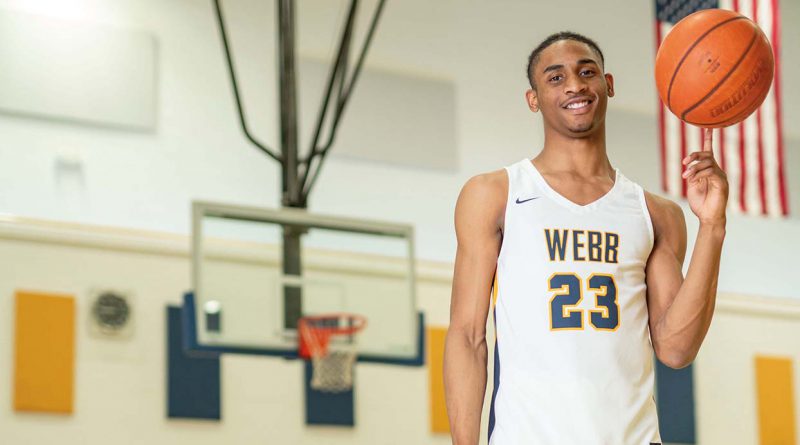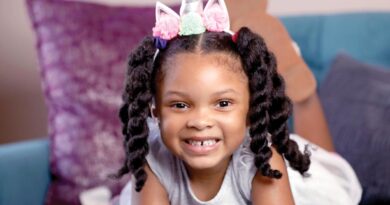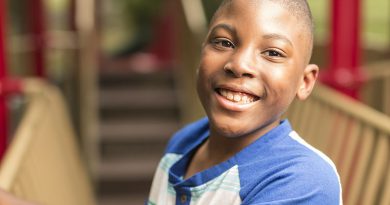Game On
Published on June 7th, 2019 by Christina Echegaray.
Summer 2019
Two months before he started high school, he dropped an artillery firework, a powerful explosive that is launched high into the sky, into a mortar tube and lit the fuse. But the fuse was too short, and the device exploded too quickly, shooting back at Keon, knocking him backward and unconscious.
Four of his fingers had open fractures (meaning the bone had come through the skin), and the breaks were so traumatic that the fingers were out of their normal positions. The damage to the ring finger was significant. The blood vessels would have to be repaired to avoid amputation. Regaining optimal use of his hand wasn’t a guarantee as he was wheeled into surgery at Monroe Carell Jr. Children’s Hospital at Vanderbilt. Keon was fortunate to have Doug Weikert, MD, one of the nation’s best hand surgeons, on his care team.
This year, Keon, a 17-year-old junior at The Webb School in Bell Buckle, Tennessee, is one of the top college basketball recruits in the nation for 2020, being courted by some of the best programs and universities in the country — Auburn, Mississippi, Tennessee, Vanderbilt, Ohio State, and Virginia. He was named Tennessee’s Mr. Basketball for Division II-A by the Tennessee Secondary School Athletic Association for the past two years in a row and is listed as the top-rated college basketball prospect in Tennessee for the class of 2020, according to 247Sports, an online sports site.
“It was bad”
Keon doesn’t remember all of the details about the explosion that could have ended his life or, at the very least, cut his athletic career short. On June 26, 2015, he and his cousin were setting off fireworks at his cousin’s house, where Keon had spent the night. He lit the large projectile firework and it went off while he was leaning over it.
He was knocked out, and once he regained consciousness, had to feel his way around. “I couldn’t see at first,” he said.
He reached for his iPhone in his front right pocket, but the phone had absorbed most of the impact to his leg and groin area and was dented and unusable.
“After I couldn’t get my phone to work, I told my cousin to call 911, and then I called my mom on his phone.”
He doesn’t remember the conversation, but his mom, Conswella Sparrow Johnson, does. She was asleep when her son called and quickly dressed and raced to his side. She got there as he was being evaluated by paramedics inside the ambulance.
“There was a lot of blood on his hand, his leg and his chest,” she said. “His chest took some of the after-effects. He had little burns all over his chest. I was worried about his eyes too. The whites of his eyes were blood red, and we didn’t know at first if his vision had been damaged, or his testicles. His cell phone definitely saved his groin area.”
Conswella rode in the front of the ambulance and could hear the paramedics talking to her son and to each other in the back of the emergency vehicle. “They said they might not be able to save his hand. At that point, my first instinct was to start praying, and that’s what I did,” she said, pausing to choke back tears while Keon reached out to pat her back.
They hit rush hour as they raced down Interstate 24 to Vanderbilt, more than an hour away. “We ran into all kinds of traffic on the way in. We were on the median, with our flashers on, trying to get him there as fast as we could. I called my husband when we were driving in and told him to get everybody to Vanderbilt, that it was bad.”
When the ambulance pulled in to the emergency entrance of Children’s Hospital, two hospital staff members were outside, waiting for them. “They checked him from head to toe — his vision and every single part of his body. I was thoroughly impressed with Vanderbilt, and I’m so thankful we came straight there,” she said. “Otherwise, he might not have a left hand or might not be able to use it.”
Joined at Children’s Hospital by her husband, Keith, and Keon’s siblings, Kora, who was 6, and Kegan, who was 4, the Johnsons waited with relatives while Weikert repaired Keon’s hand.
Weikert, who played basketball for the Vanderbilt Commodores during his undergraduate years, said that he didn’t know that Keon was a top-notch basketball player when he first met him and his mom that morning.
But it wouldn’t have changed the course of treatment.
“I see a fair amount of horrible injuries to kids,” said Weikert, associate professor of Orthopaedic Surgery and Rehabilitation and Plastic Surgery. “You look at it like starting from zero. You have to hope at the end of the day you have components that with healing, therapy and motivation can be turned into a useful and productive hand,” he said.
“You don’t know what you’re going to get at the end of the repair, but you start with the basic principles. Does the patient have a thumb? How many fingers were injured? How many are going to make it? What can I do to help the salvageable parts of the hand?
“I didn’t know this 13-year-old, lanky, athletic kid was going to grow up to be a top 20 national basketball player. You can’t look at patients like that. You focus on the injury in front of you.”
Weikert earned his medical degree from Vanderbilt University School of Medicine and did his internship and orthopaedic residency at Vanderbilt University Medical Center before completing a fellowship in hand surgery at Indiana Hand Center. His work requires skills in both microsurgery and plastic surgery, especially when he’s reattaching limbs. He’s an adult orthopaedic surgeon but is frequently called by his counterparts at Children’s Hospital to handle complicated hand injuries.
Previously, Weikert was involved in one of the youngest arm reattachments in the country — a 14-month-old child who lost his arm in a car wreck. In 2007, he reattached a foot of a 13-year-old girl whose feet were severed by a cable that broke loose on an amusement ride in Kentucky, a story that grabbed national headlines.
A Painful Process
Keon’s left hand had open fractures of the middle, ring and little fingers. The ring finger was the most significant injury and did not have blood flow when he arrived.
In the operating room, Weikert had to repair the blood vessels to the ring finger to keep it from being amputated. The bones of the middle and ring fingers were stabilized with pins for several weeks until the hand healed.
After Keon’s hand was repaired, he went through eight weeks of intensive physical therapy, three to four days a week. It’s essential that therapy begins when the bones are healing, not after, so scar tissue can be neutralized and motion can be restored. It’s a painful process, Weikert said.
Keon wore stents to straighten his fingers and had daily exercises he was responsible for doing on his own.
Weikert said that patients with severe hand injuries need to be focused and motivated. Keon was.
“Clearly, injuries like that can go either way. With that kind of injury, the younger you are, the better you do in terms of recovering nerve injuries and skin recovery, and bone healing in a timely manner. All those things in general do better in younger patients than older ones. His potential to recover, based on his age alone, was quite good.”
Weikert said that Keon’s attitude was key in getting him through the worst of his injury. He was able to remain motivated and able to work through the pain, Weikert said.
“He rehabbed it and played through it. He didn’t let it get the best of him. He didn’t feel sorry for himself. He knew he made a mistake. He owned up to it and took it upon himself to rehab through all the pins sticking out of his fingers and the pain that goes along with that injury and the scar tissue. He recovered. He got over it,” Weikert said.
“You never know what you’re going to get with a teenager in terms of handling things like that. I’ve had three of them. Some just don’t know what to do. Others are coachable. He was certainly coachable.”
The hand is an organ in and of itself, Weikert said. The anatomy is complex and challenging. The structures of the hand include 27 bones. Fourteen bones make up our fingers and thumb, and each finger has three phalanges that connect to each other, forming two joints in each finger. The thumb has only two phalanges and one joint. These bones are held together by a system of ligaments, tendons, muscles, nerves and blood vessels.
“It does so many things for us. We don’t realize how important it is functionally until it’s in a cast or a dressing or we lose a finger or a thumb. Every digit is so important, and the stakes are high when digits are injured like that, especially for an athlete.”
Weikert said hand surgery on athletes is a particularly compelling challenge for him as a surgeon.
“It’s a way to keep my hand in the game, doing surgeries that are challenging that make me feel like I could help return athletes and other patients to their previous levels of function. It’s some of the most rewarding surgeries we do — when an athlete gets injured, we can measure our outcomes right in front of us. You can tell right away when an athlete excels in the way they were able to right before the surgery. And when they do excel, it’s about as rewarding as it gets for me.”
Runs in the family
Keon’s mother, Conswella, said her son has played basketball since he was about 6. The family is no stranger to athletics, she said. She’s a two-time Class AAA Miss Basketball at Shelbyville Central High School, winning the award in 1994 and 1995, and was the Class AAA state tournament MVP in 1994. She went on to become a two-time All-SEC player at Auburn.
She started a fifth and sixth grade girls’ basketball program in Shelbyville several years ago, and when Keon was about 6, he’d come to practice with her. From then on, he was rarely seen without a basketball in his hand. He’d line up with the girls, doing the same drills they were doing.
Keon excelled at both basketball and baseball in middle school and played travel baseball until his eighth-grade year. He stopped playing baseball when The Webb School didn’t have enough players for a team. But he still loves the game of baseball and considers it his favorite sport.
Keon’s basketball coach, Jeff Mitchell, said Keon is a “great kid and a good leader.

“He’s tall and quick with a lot of ability. He’s skilled on the court, but more than that, he’s intelligent,” Mitchell said. “What really impresses me is his social intelligence. He’s a good reader of people and situations. There are a lot of players who are his size with his quickness and jumping ability, but what sets him apart is how he reads the game. When he’s watching, he’s studying what happens and thinking about what he’d do. He sees the game differently than most people. Basketball is more of a game of chess to someone like Keon,” Mitchell said.
He embodies The Webb School honor code, “do nothing on the sly,” his coach said. “You have to buy into that or you don’t stay.”
Keon often eats lunch with younger students, Mitchell said. “They all look up to him. He’s their guy.”
Keon said he’s in a wait-and-see pattern for his future. He will decide in August about where he will play basketball. In May, he narrowed his choices to three: Virginia, Ohio State and Tennessee.
Mitchell just wants him to be happy.
“We want him to go somewhere where they care about him as a full person and not just a basketball person, where they care about him socially and want him to do well. He’s a great young man who’s not just interested in basketball.”
Keon said his injury changed his perspective on life.
“It changed my life as soon as it happened,” he said. “There’s no question I put my life in jeopardy. I found out right after my accident there was another kid who had the same accident and passed away. This made me more humble. I don’t know where I’d be without basketball, and especially my hand.”
— by Nancy Humphrey




